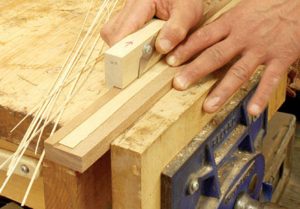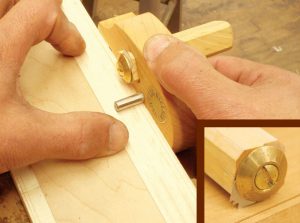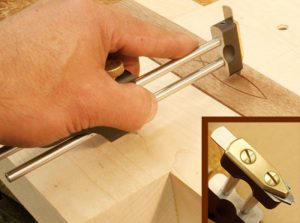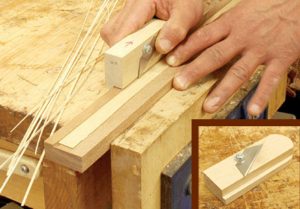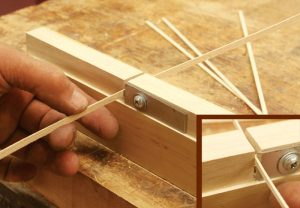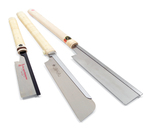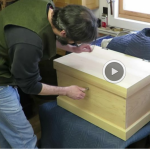We may receive a commission when you use our affiliate links. However, this does not impact our recommendations.
4 Hand Tools for Stringing
Find out more about using hand tools to make stringing inlay.
| Stringing reached its peak as an art form way back in the late 18th century, long before power tools. In those days, both the grooves and the strips were made by hand with great precision. You can use those same methods today with these four hand tools. They’re specifically designed for stringing work. • Straight line cutter. This tool is used to make • Radius cutter. This tool is used to make circular • Slitter. I made this tool to slice stringing • Thicknessing and tapering jig. I built this Source(Note: Product availability and costs are subject to change since original publication date.) Lie-Nielsen, lie-nielsen.com, 800-327-2520, Straight Line Cutter, IN-SC; Radius Cutter, IN-RC. This story is a companion piece to “Stringing Inlay,” which originally |
Click any image to view a larger version.
1. This straight line cutter works like a marking gauge 2. A radius cutter works like a trammel to make circular 3. This slitting tool cuts stringing material into narrow 4. This shop-made jig shaves the stringing to exact |
Here are some supplies and tools we find essential in our everyday work around the shop. We may receive a commission from sales referred by our links; however, we have carefully selected these products for their usefulness and quality.



